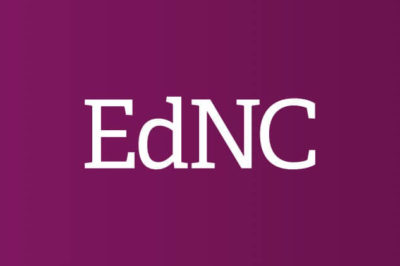Few question the need for greater investment in public school facilities. The 2015-16 Facility Needs Survey, published by the N.C. Department of Public Instruction, estimated a statewide need for new schools, additions, renovations, furniture, equipment and property of $8.1 billion.
According to that survey, Robeson County’s elected officials reported that their school facilities would require an investment of $131 million over the next five years. To accommodate that need, the Public Schools of Robeson County Board of Education proposed using a public/private lease-purchase agreement to initiate a massive overhaul of district facilities.
There is nothing inherently wrong with public/private partnerships. The private sector can use its financial and regulatory advantages to benefit public institutions and ultimately taxpayers. The mutual benefits that result might far outweigh costs to individual parties.
But a public/private partnership should be one among many options explored by elected officials. The long-term implications of such arrangements demand prudence from all stakeholders.
In North Carolina, local governments are responsible for construction and maintenance of school facilities and other capital expenses. For decades, school districts and county commissions have debated how to meet those needs in an educationally appropriate and fiscally responsible way.
County commissions oversee two primary sources of revenue for school buildings. They collect local-option sales tax revenue and authorize debt instruments, such as voter-approved bonds or forms of indebtedness that do not require voter approval.
There are also various instances of state assistance. The most notable examples include the redirection of state corporate income tax revenue, the distribution of lottery revenue for capital expenses, and passage of statewide bonds. The Connect N.C. bonds approved by voters earlier this year include no funding for elementary or secondary school facilities.
In 2013, the N.C. General Assembly approved another option. Session Law 2013-401 authorized governments to enter into public/private partnerships for construction or renovation of buildings without the burden of obtaining approval by the legislature for each project undertaken. Lawmakers reasoned correctly that simplifying the public/private partnership process would bolster communities that do not have financial resources to undertake large-scale projects on their own.
Senate Bill 554 would modify the law by requiring the school board to adopt a resolution stating an intent to enter into a lease-purchase contract with a private developer. The school board would have the ability to determine which developer receives the contract so long as they take into account “any factors the local board of education deems relevant.” The expedited (and arguably inadequate) process, along with the possibility that state funds might follow, explains much of the reason why the Robeson Board of Education plan is dependent on passage of Senate Bill 554.
Aside from legislative considerations, proponents of the lease-purchase contract have made claims that are not supported by available research.
For example, it is unlikely that construction of new facilities will improve educational outcomes or strengthen teacher recruitment and retention. There is no apparent relationship between the age of school buildings and student test scores. There is also no empirical evidence that newer school facilities attract prospective teachers to a district.
In addition, new school buildings would not necessarily attract business and industry to the county. The private sector chooses to invest in locales that have relatively low tax rates, a record of sound fiscal management, and a highly skilled labor force. Plans that raise taxes and potentially cripple county budgets for decades are hardly attractive to potential employers.
Finally, long-term leases might make sense today, but the district must be mindful of the trajectory of student enrollment. Between 2005 and 2015, Robeson public school enrollment dropped by more than 500 students. If those trends continue, the district may be paying for half-full buildings at full-building prices.
I agree with recommendations recently offered to the school board by representatives from the Department of State Treasurer and Local Government Commission. The school board should explore more traditional financing options carefully before entering into a lease-purchase contract, even if Senate Bill 554 becomes law.


